Innovation & Imagination
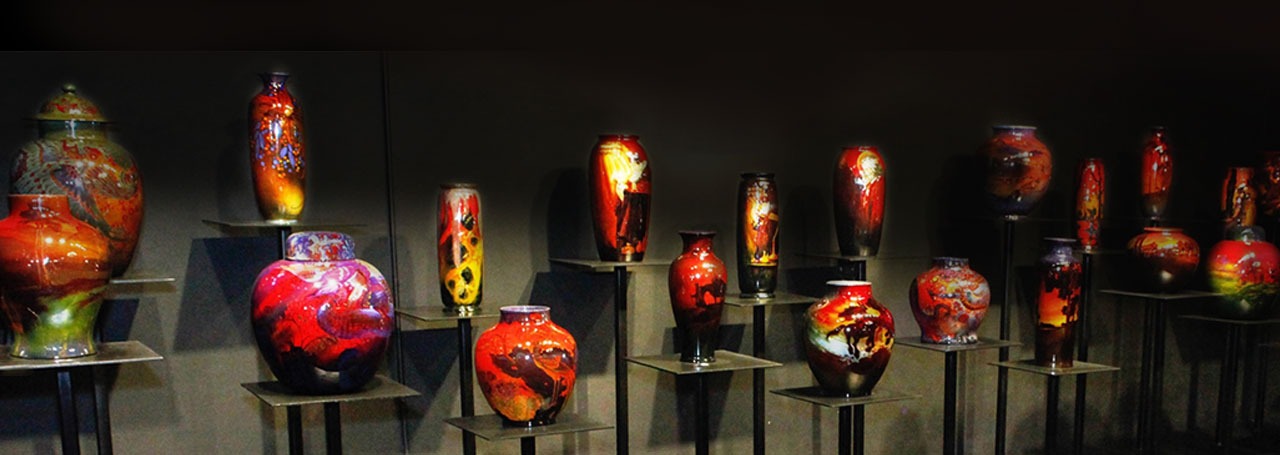
Lure of Luster
In 1914, the Wedgwood factory in Staffordshire perfected a range of liquid luster glazes which were decorated with golden designs of butterflies, birds of paradise and shimmering shoals of fish. The designer Daisy Makeig-Jones became famous for her Fairyland Lustre Ware, populated with imps, goblins and fairies in fantasy forests. Her fanciful designs were launched in 1915 and remained popular until the Wall Street Crash of 1929 and the Great Depression damaged the luxury goods market. Following the success of Sung Wares, Art Director Charles J. Noke perfected Chang Wares with thick lava-like glazes flowing over the surface like an erupting volcano.
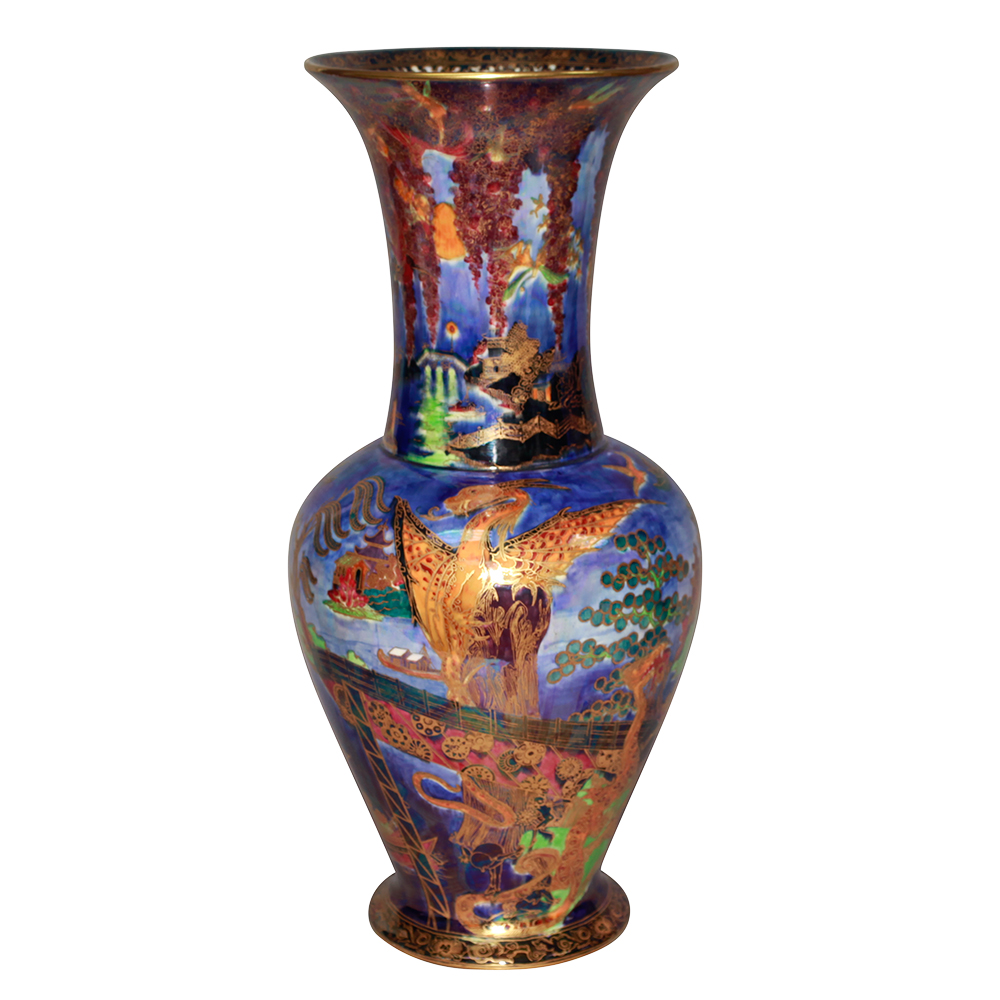
Fairyland Lustre Dragon King Vase
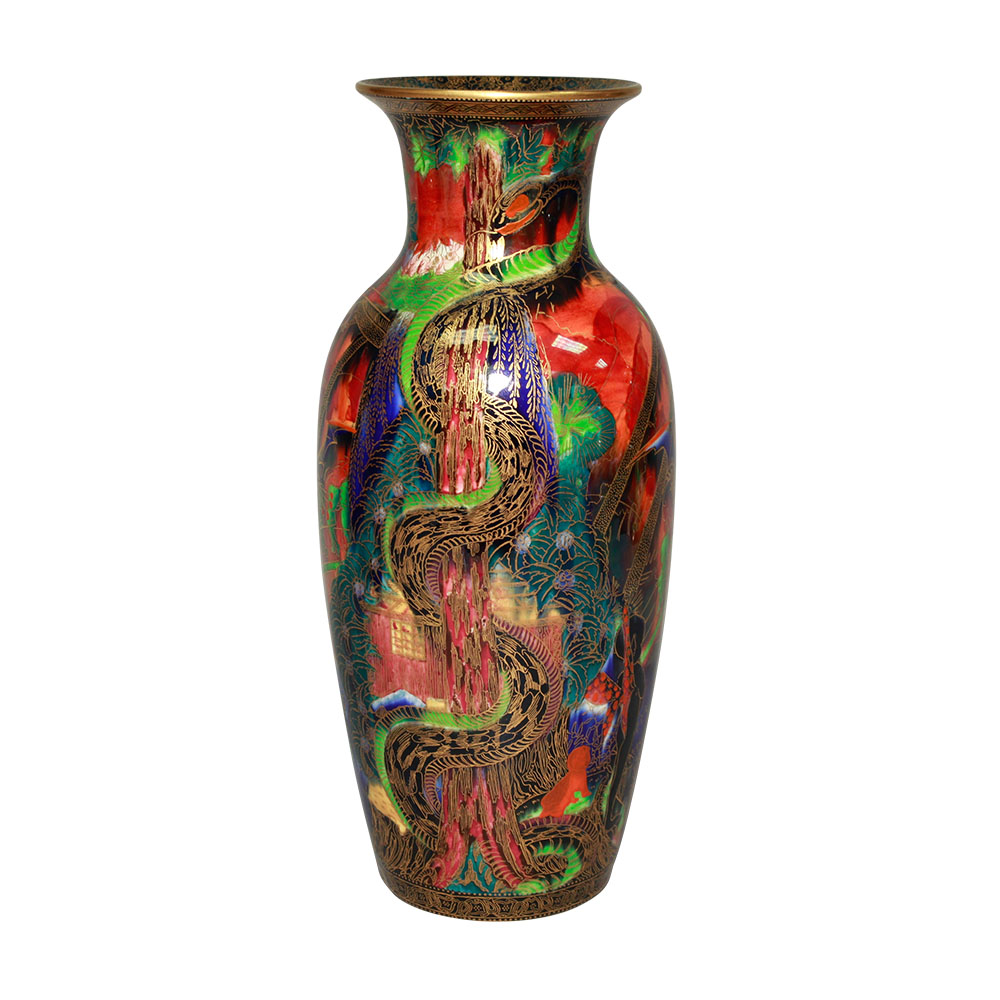
Fairyland Lustre Tree Serpent Vase c.1920
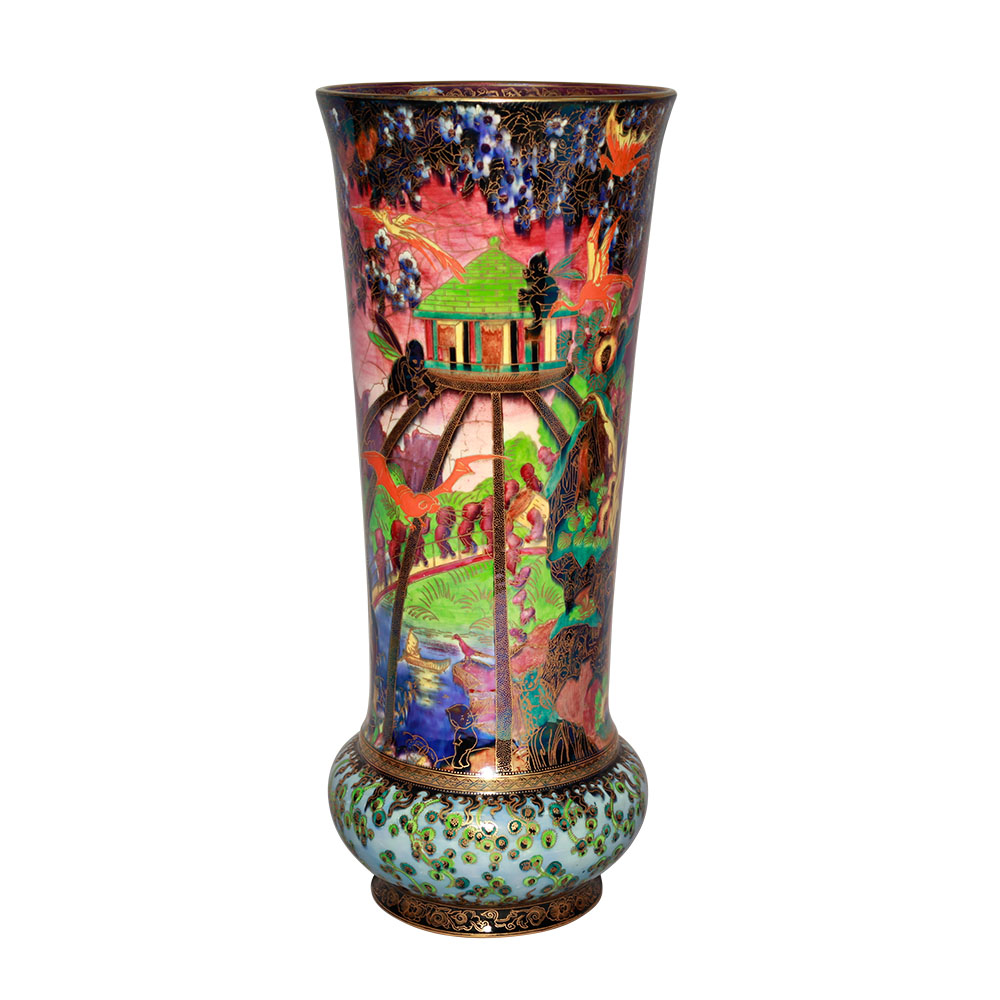
Fairyland Lustre Imps on a Bridge Vase c.1925
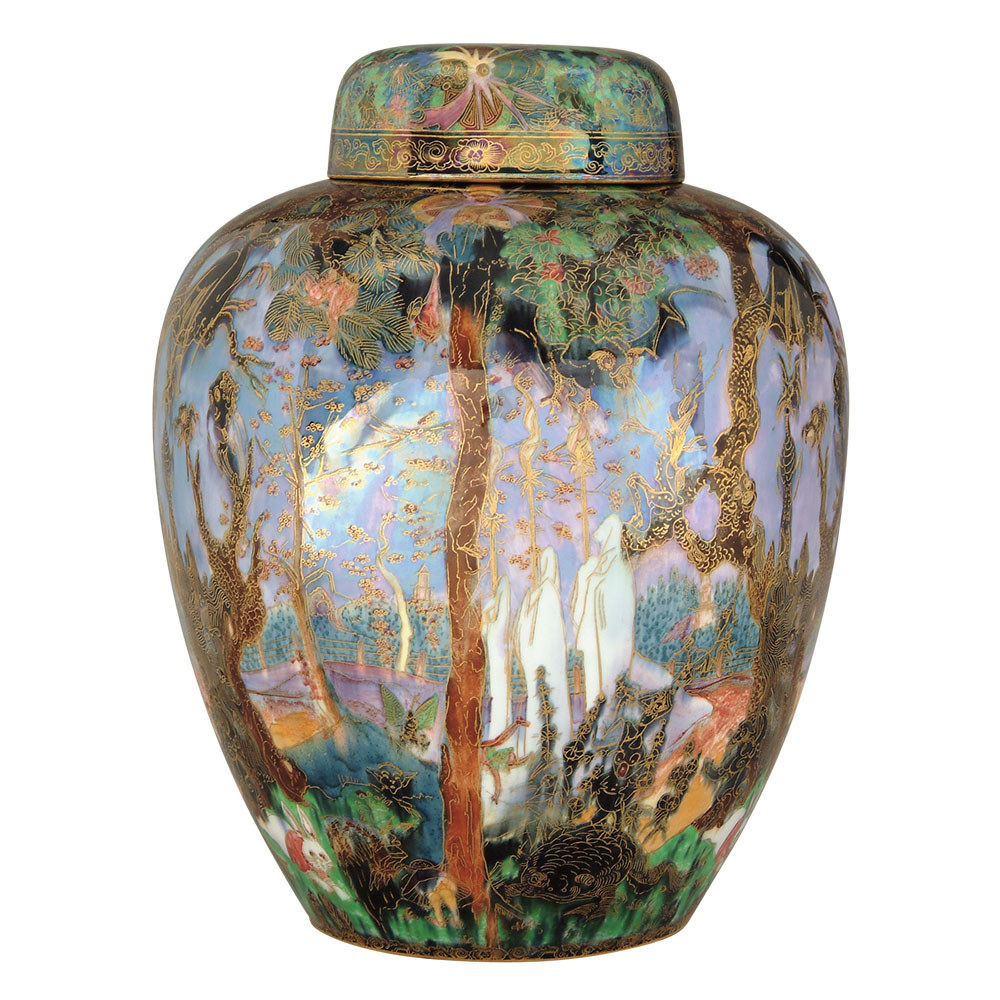
Fairyland Lustre Ghostly Wood c.1920
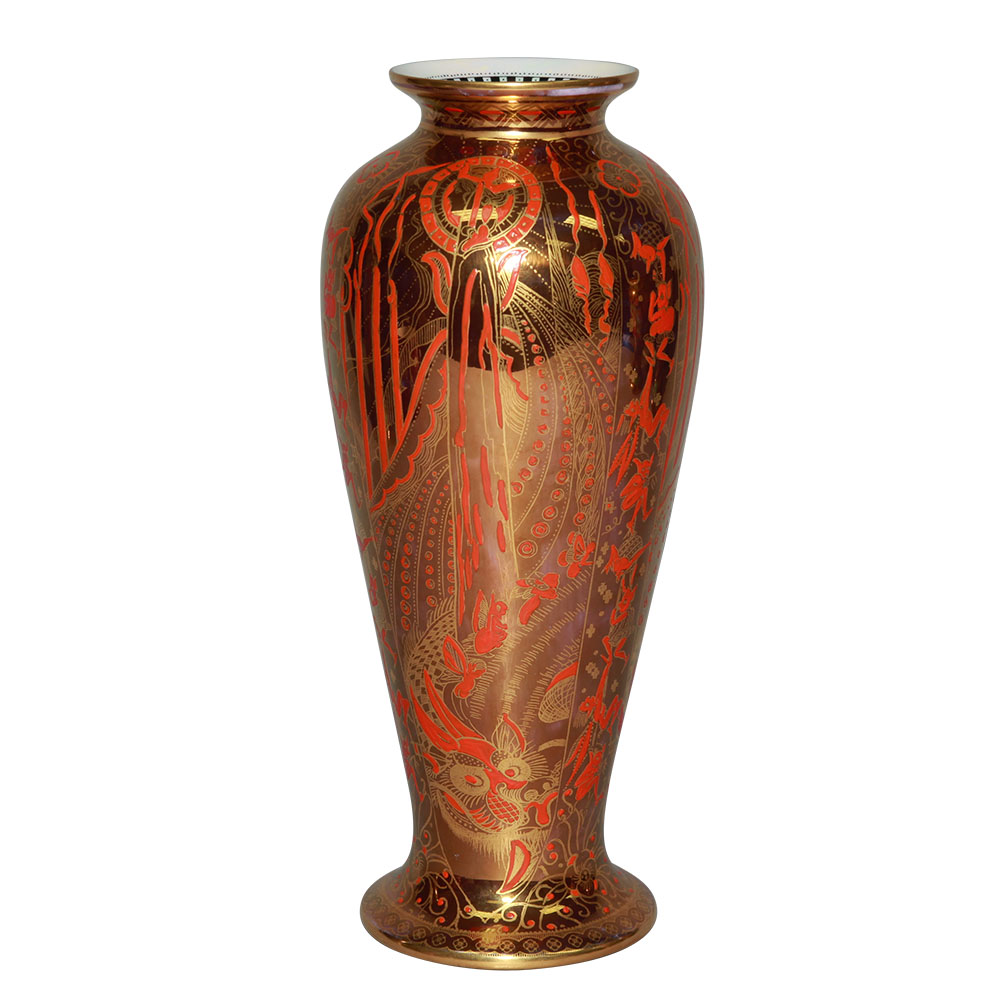
Fairyland Lustre Bronze Candlemas Vase c.1925
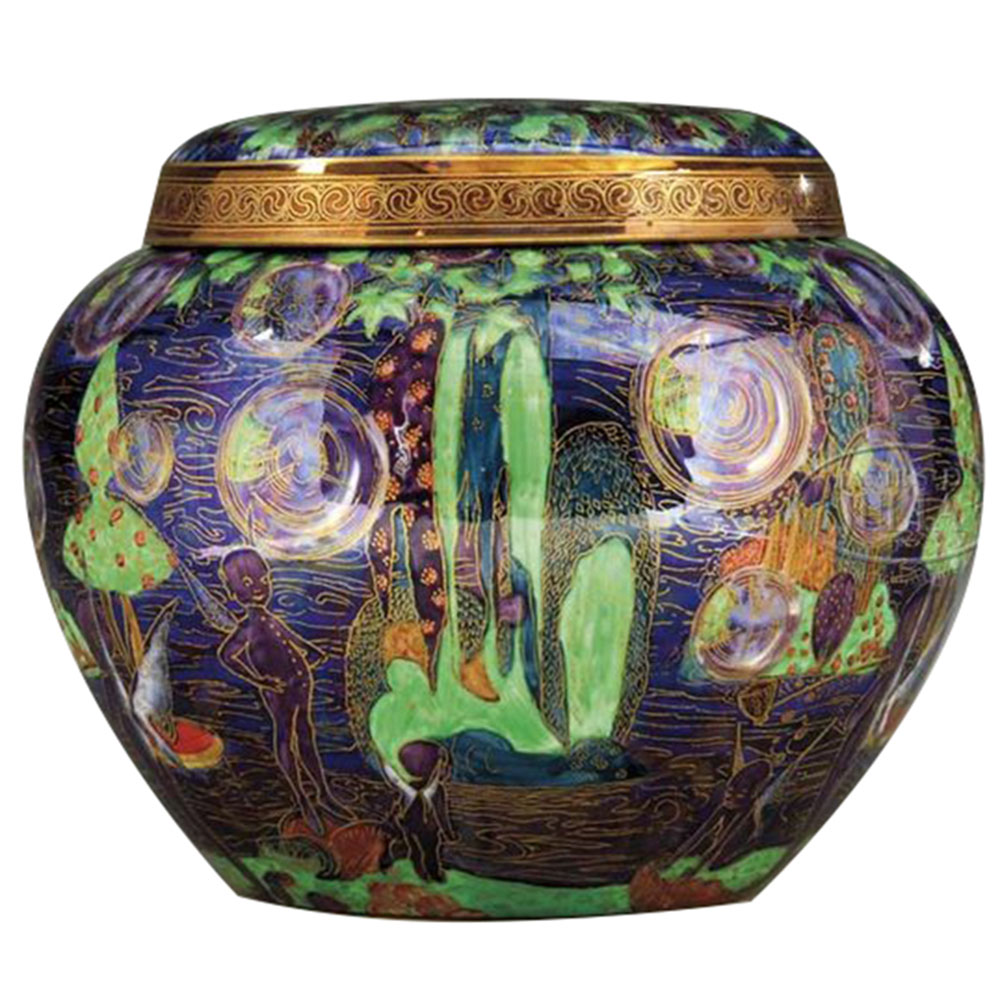
Fairyland Lustre Bubbles Jar 1920
Chasing the Rainbow
The vogue for iridescent luster pottery was pioneered by William de Morgan in the 1870s. After much experimentation, he revived the lost art of luster painting, which originated in ancient Persia. During the firing process, oxygen was excluded from the kiln and mixtures of silver, copper and other metals deposited light reflecting metallic layers on the surface of the ware. De Morgan’s designs were used on vases and tiles which decorated Victorian smoking rooms and Turkish baths. His success encouraged other British potters to “chase the rainbow” and create their own luster glazes. At the Pilkington factory in Lancashire, established in 1892, William Burton developed an opalescent glaze which was called “Lancastrian” after the county. Burton commissioned leading artists of the period to design vases, plaques and tiles for his reduction fired glaze effects.
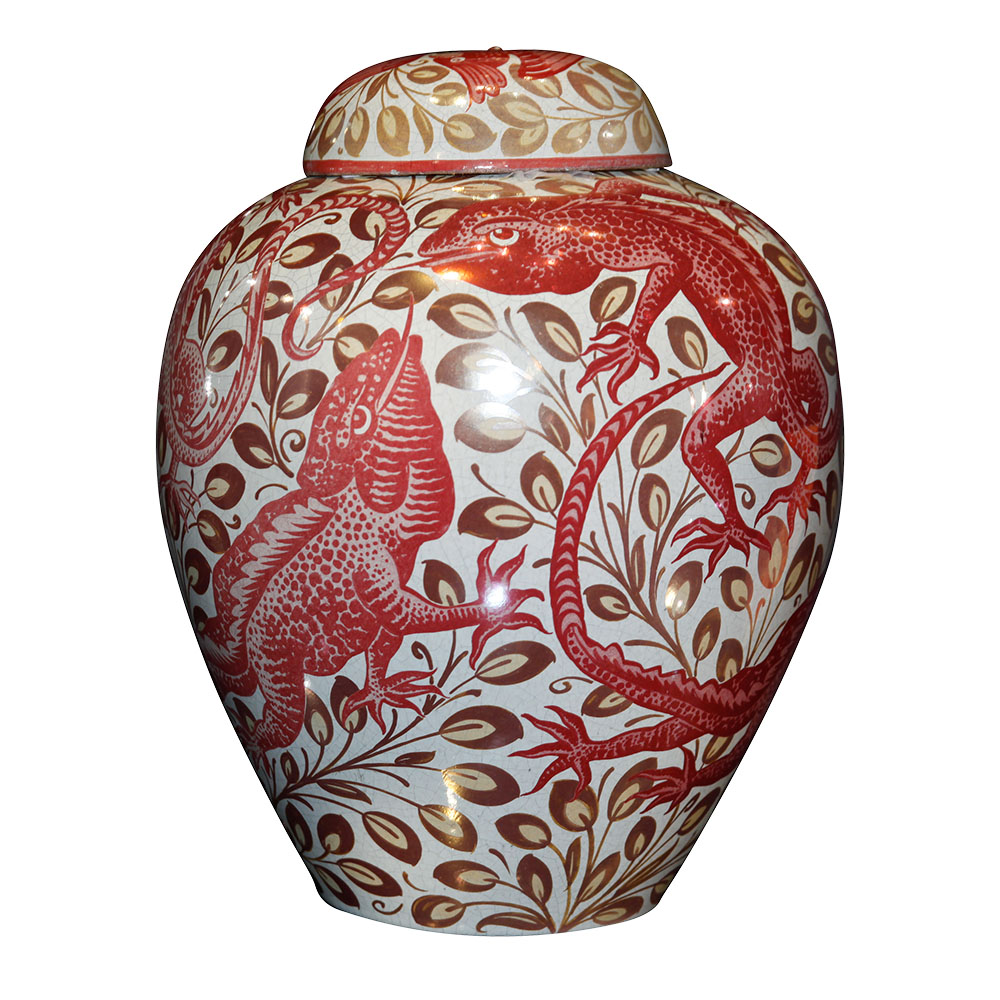
William de Morgan Reptiles Jar
by F. Passengerc.1910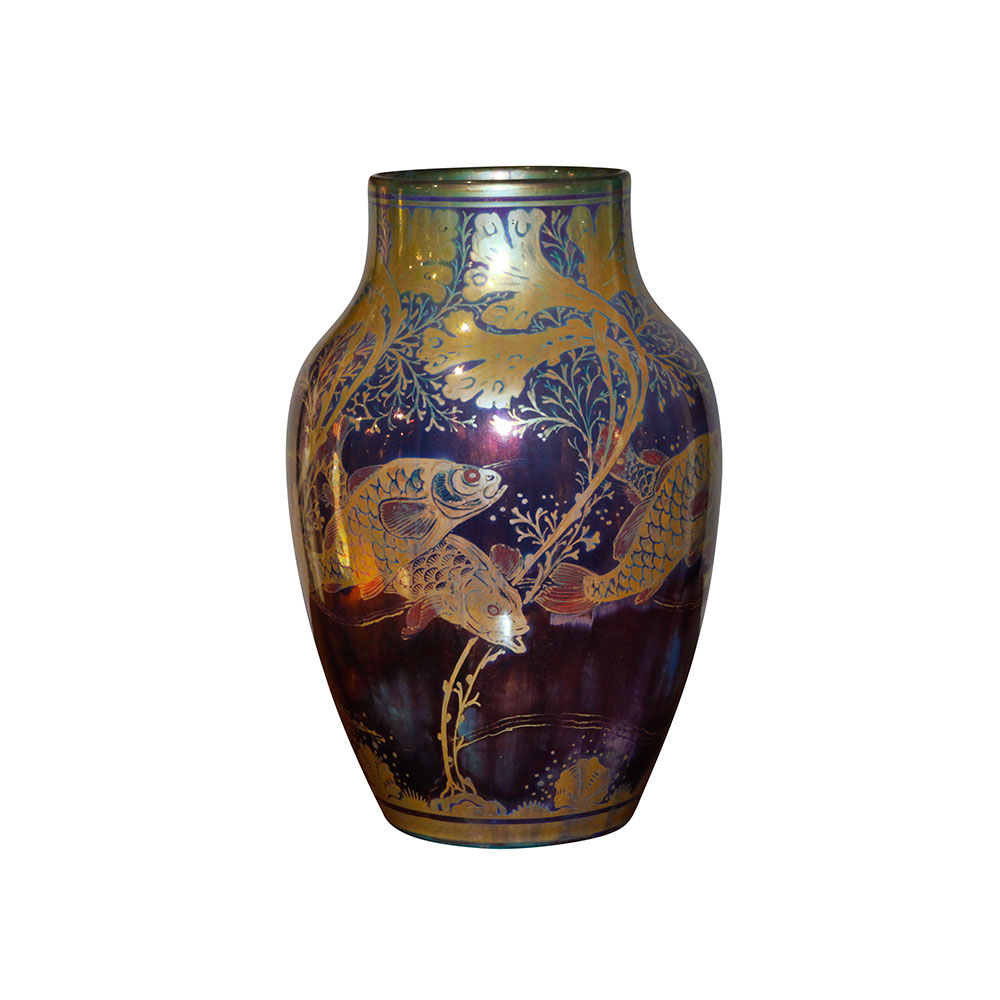
Pilkington Royal Lancastrian Fish Vase
by R. Joyce c.1915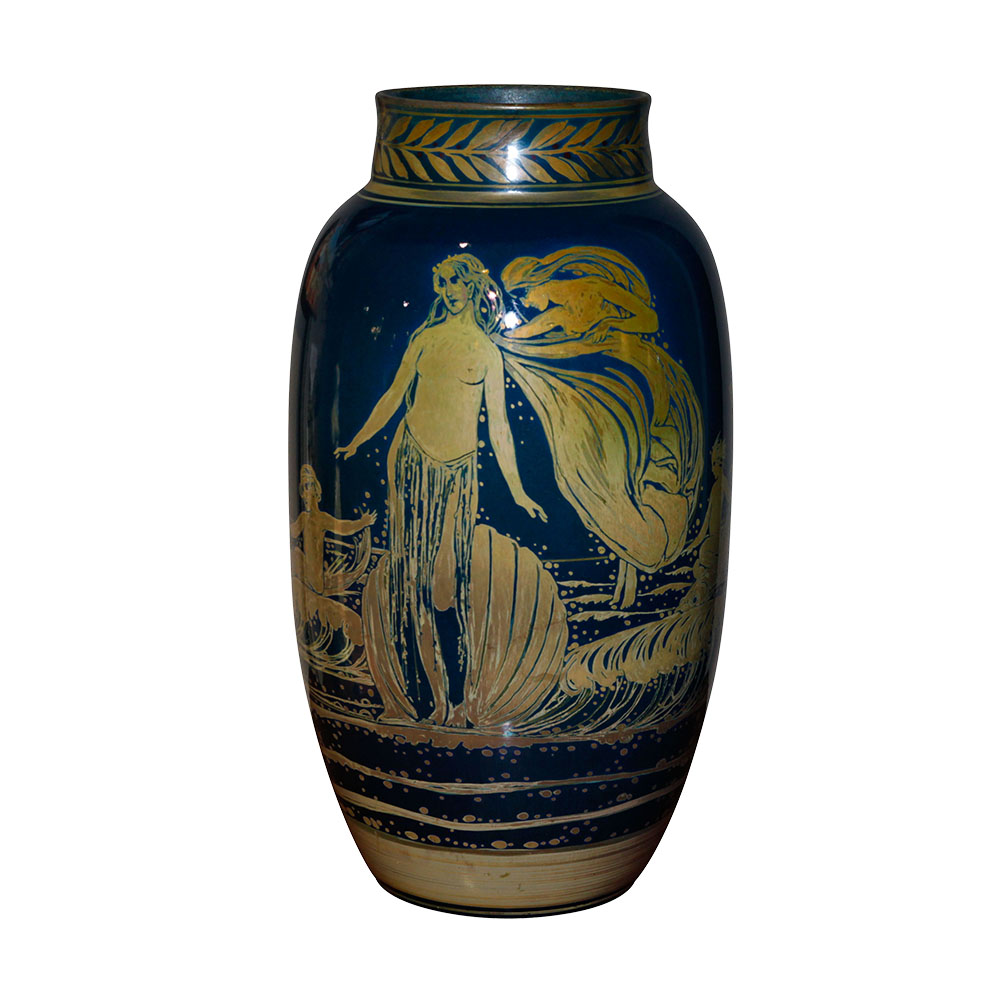
Pilkington Royal Lancastrian Venus Vase c.1915
Secret of Sung
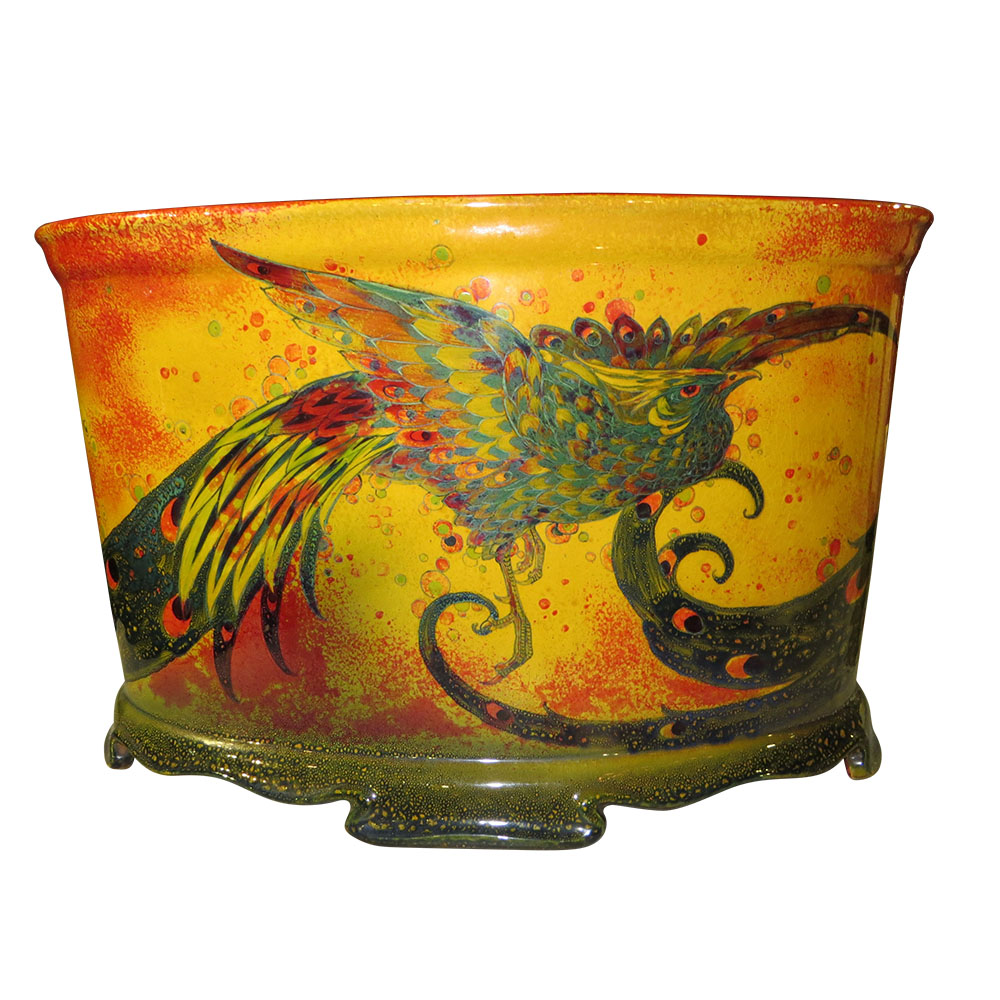
Sung Flying Peacock Basin by C. J. Noke c.1930
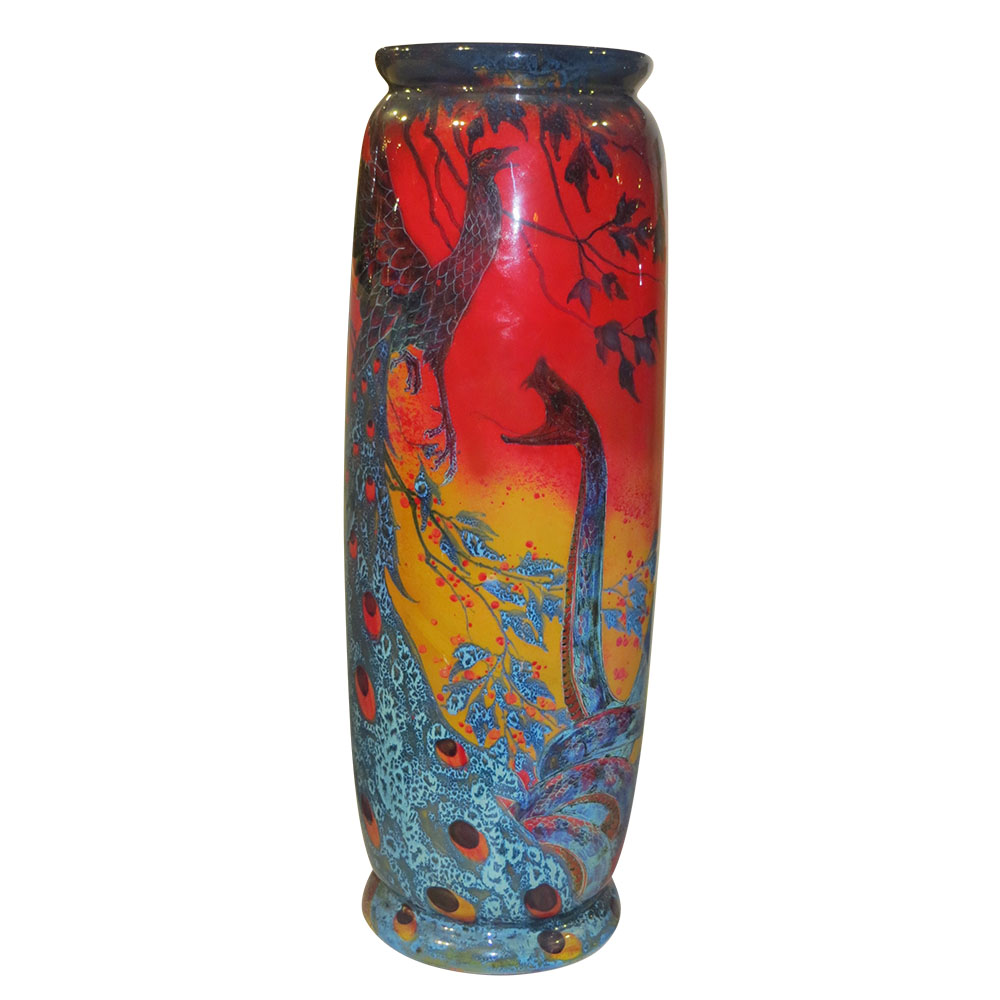
Sung Peacock and Snake Vase
by C. J. Noke c.1930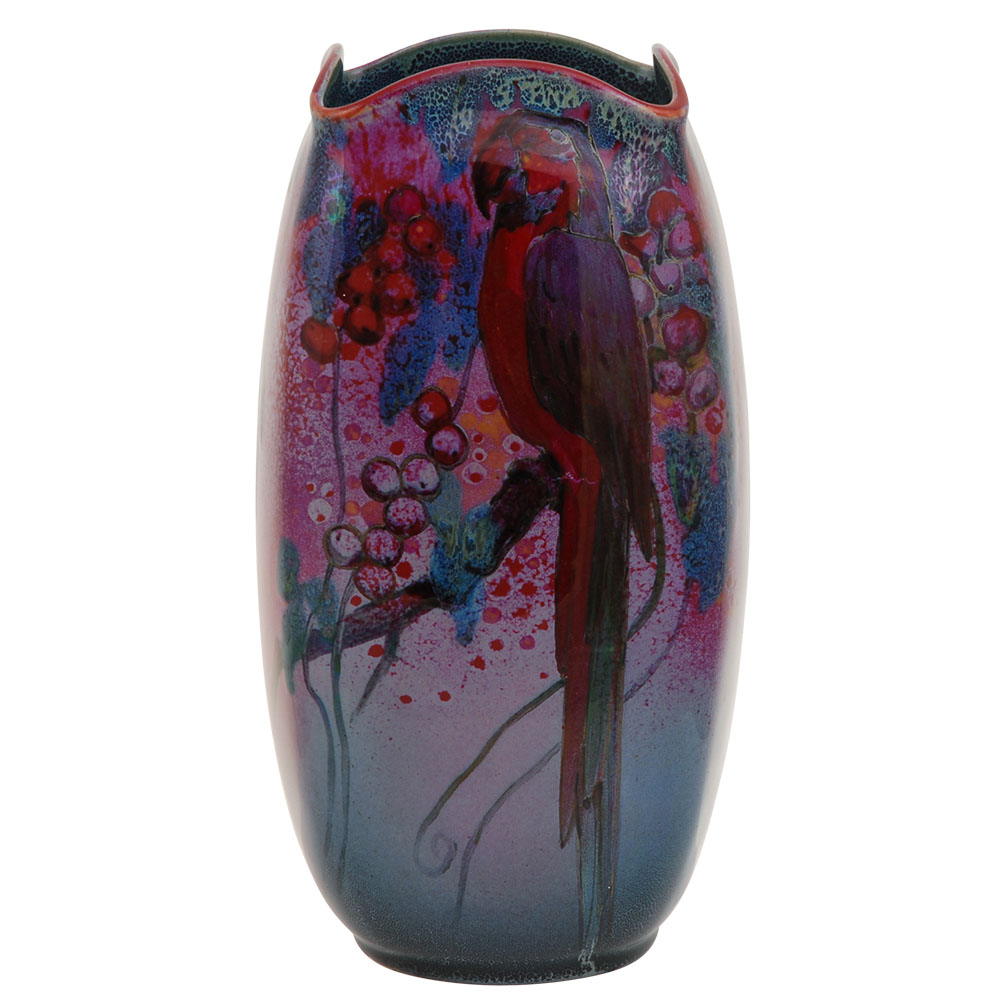
Sung Parrots Vase by C. J. Noke c.1930
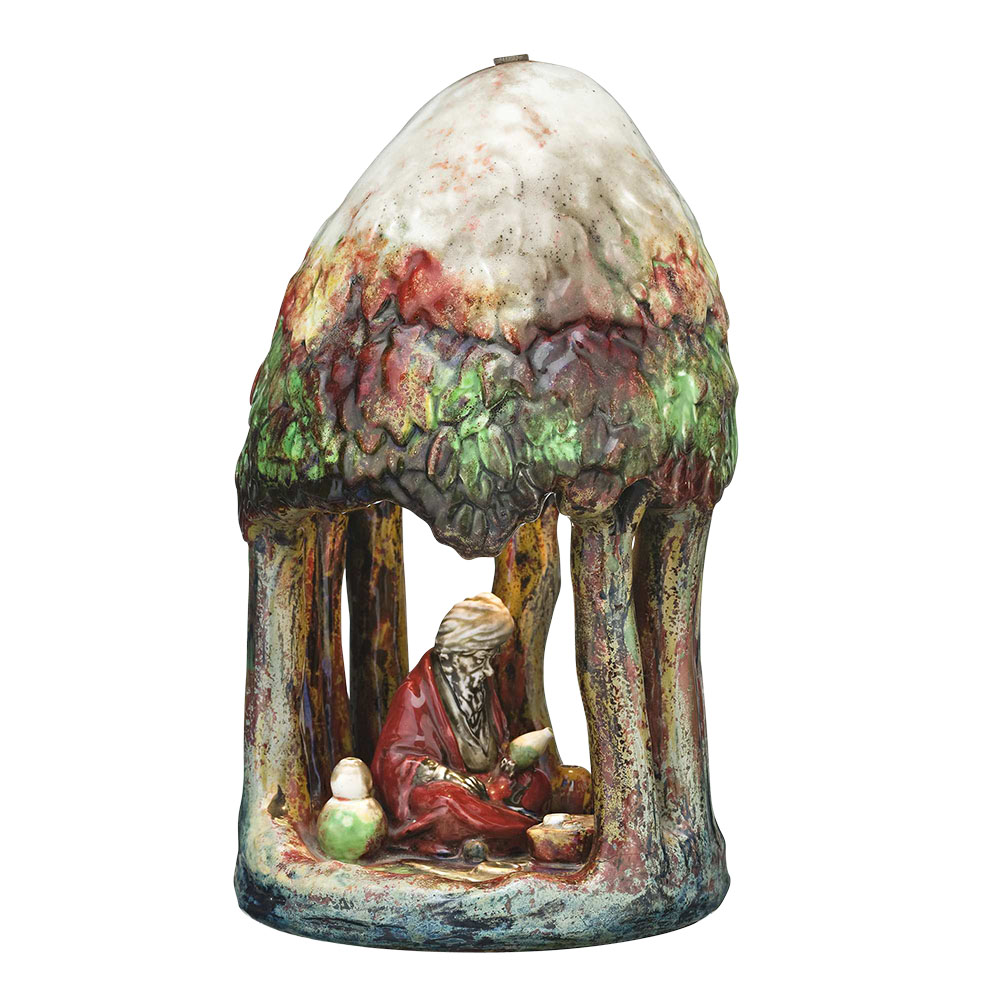
Chang Potter Lamp by C. J. Noke c.1930
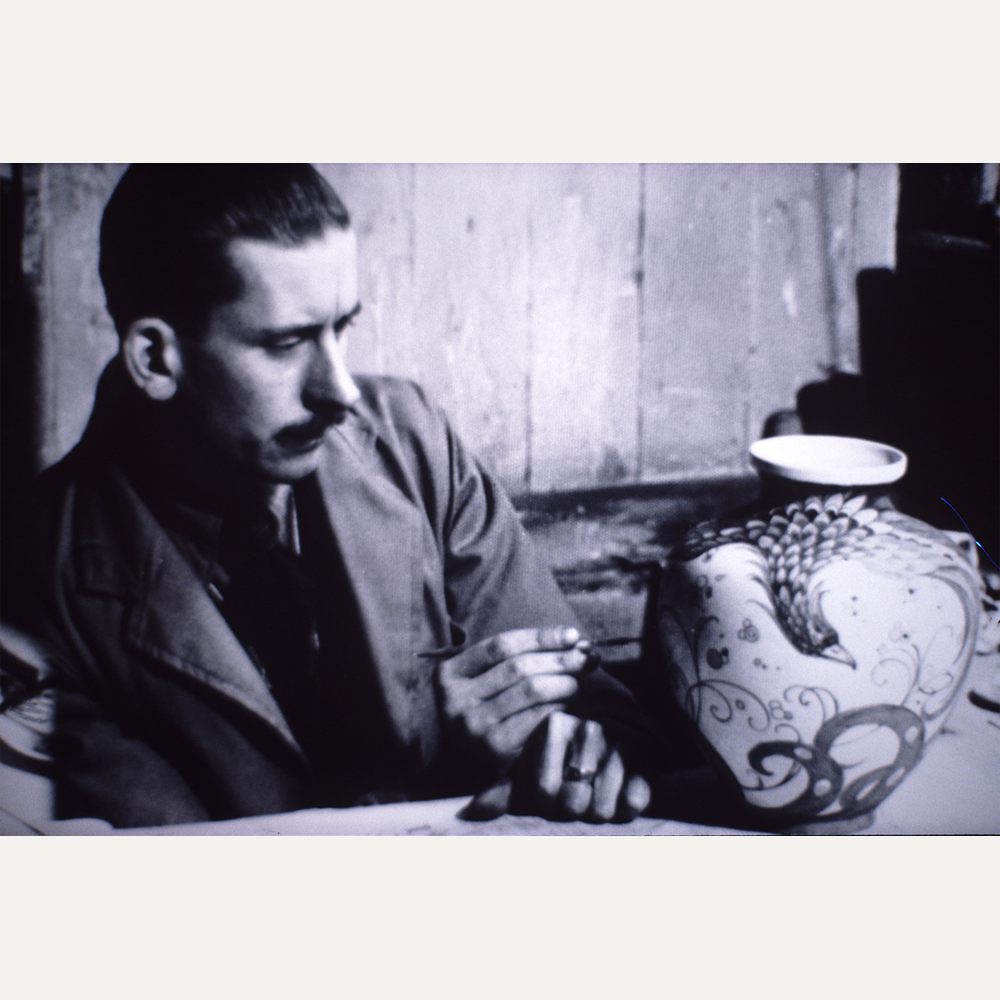
Fred Moore Painting a Sung Vase c.1940
